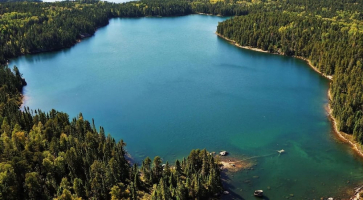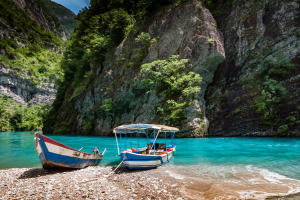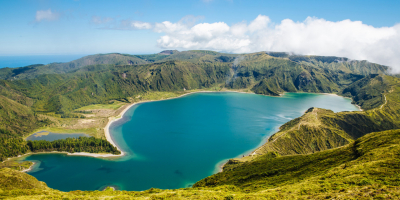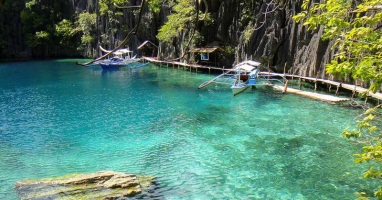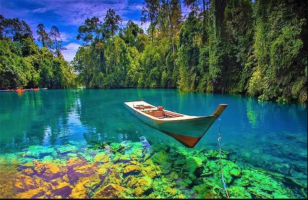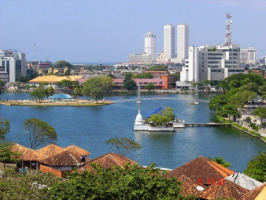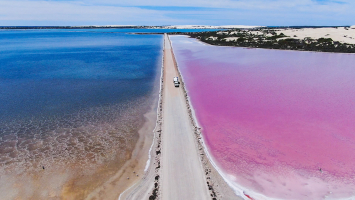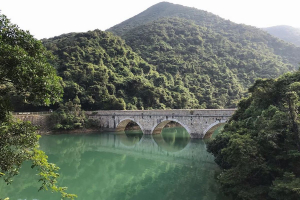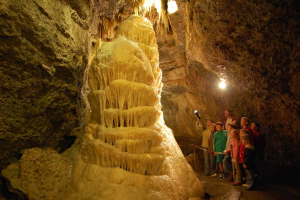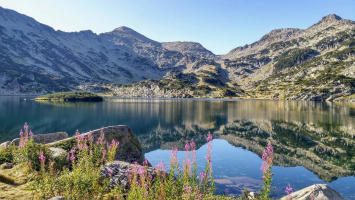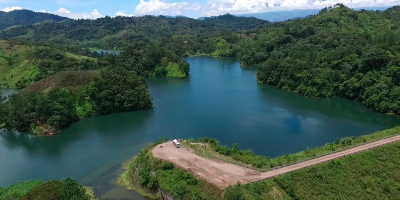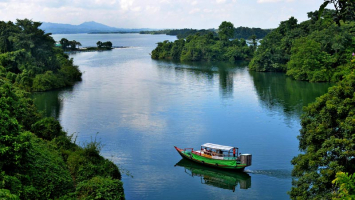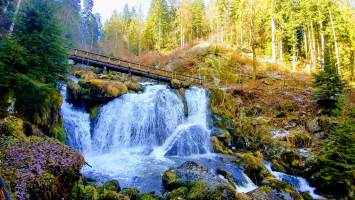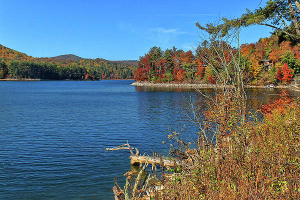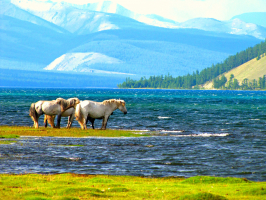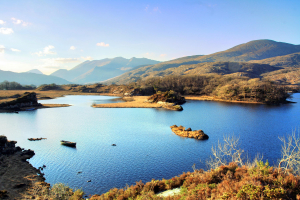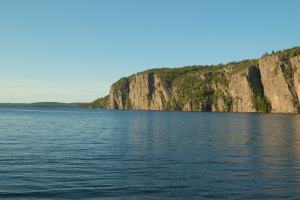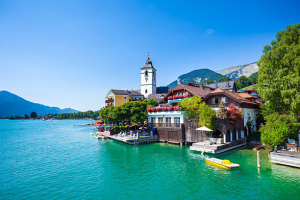Top 12 Most Beautiful Lakes in Germany
The lakes are the ideal summer destination for those who want a place to relax and cool off without descending to cramped beach destinations. In a beautiful ... read more...country like Germany, there is no shortage of beautiful lakes. Let's join Toplist to discover the most beautiful lakes in Germany!
-
A natural lake called the Königssee can be found in the far southeast Berchtesgadener Land region of the German state of Bavaria, close to the Austrian border. Königssee Lake is one of the most beautiful lakes in Germany. In the Berchtesgaden National Park, the lake is located mostly.
The lake and adjacent parklands are particularly well-liked by tourists and hikers because of their attractive location. Additionally, the surrounding sheer granite cliffs produce a crystal-clear echo. It has become customary to pause during boat tours and play a trumpet or flugelhorn to explain the echo. The echo, which was previously shown by firing a cannon, can be heard to reverberate up to seven times. There may appear to be up to seven players since the trumpeter mimics the echo.
The Königssee in Berchtesgadener Land is one of Germany's deepest, cleanest, and most beautiful lakes. Electric boats are used for panorama boat trips across the surface of this glacial lake, which affords visitors breath-taking vistas of the surrounding mountains. The boats dock at Sankt Bartholomä, a stunning 1600s Roman Catholic pilgrimage church.
Location: Schönau am Königssee, Bavaria, Germany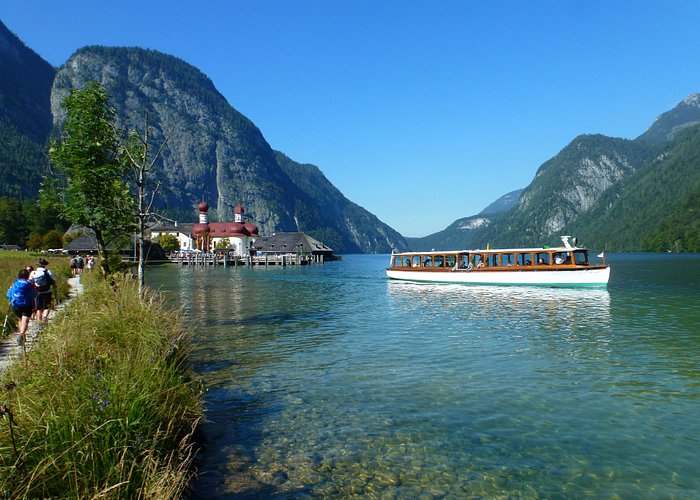
Photo: tripadvisor.com.vn 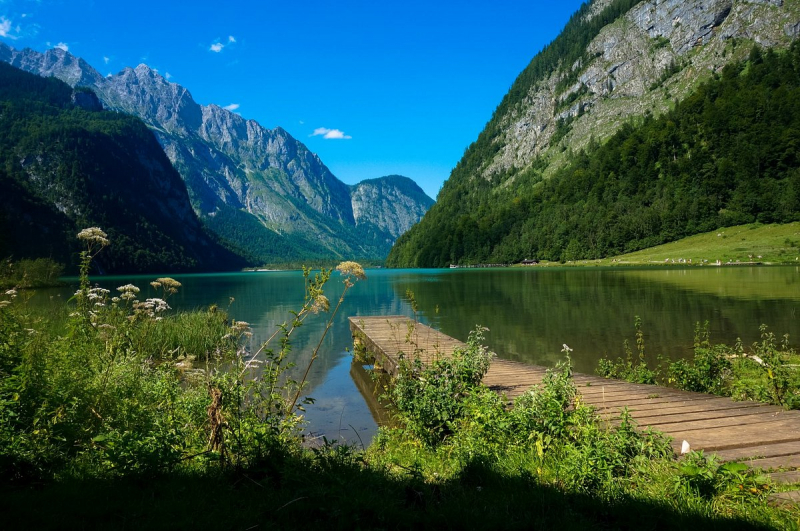
Photo: tripadvisor.com.vn -
Upper Lake Constance, Lower Lake Constance, and a connecting section of the Rhine known as the Lake Rhine are the three bodies of water collectively referred to as Lake Constance on the Rhine at the northern foot of the Alps. These bodies of water are located in the Alpine Foreland's Lake Constance Basin, which is where the Rhine flows.
Lake Constance is a Zungenbecken, or tongue lake, that was created by the Rhine Glacier during the Ice Age. The Obersee and Untersee still made up a single lake following the end of the last glacial period, which occurred roughly 10,000 years ago. The Konstanzer Schwelle, a sill, emerged as a result of the High Rhine's downward erosion, which also progressively led the lake level to drop.
The largest and most beautiful lake in Germany, Bodensee also provides the ideal setting and weather for an unforgettable family vacation throughout the year. It offers hiking paths, river cruises, cable car rides, and mountain top excursions, and it laps the coastlines of the lovely cities of Meersburg, Lindau, Bregenz, and the Flower Island of Mainau.
Location: Switzerland, Austria, Germany
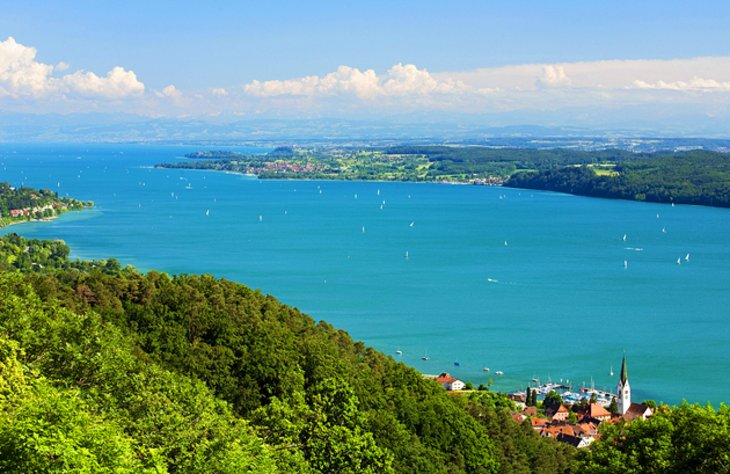
Photo: planetware.com 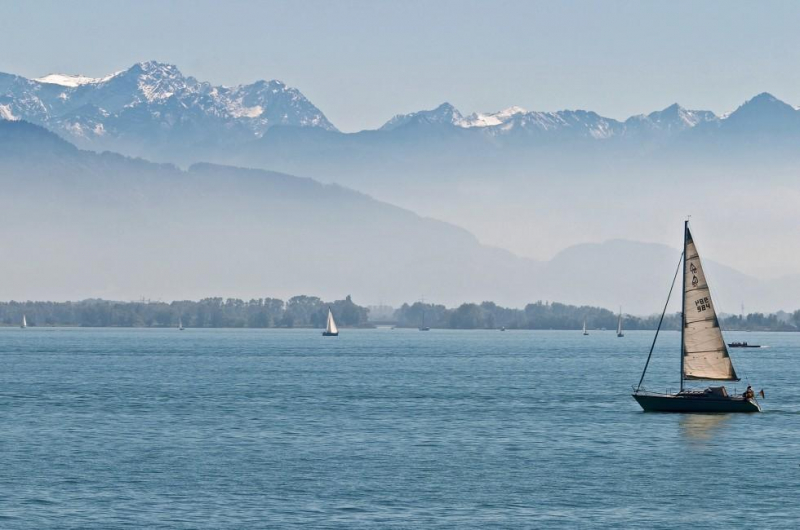
Photo: fodors.com -
A lake called the Titisee can be found in Baden-southern Württemberg's the Black Forest. It is 20 m on average deep and has a surface area of 1.3 km2. The Feldberg glacier, whose moraines originated during the Pleistocene era and today make up the lake's shores, is responsible for the lake's development. At 840 meters above sea level, the lake's outflow is the River Gutach, which joins the Haslach stream below Kappel to form the Wutach.
The largest natural lake in the Black Forest, Titisee, is also one of the most visited destinations in the area. It is surrounded by rolling hills and extremely dense trees. As breathtaking as the view of the land from a cruise boat is the view of the lake from the neighboring peaks. Additionally ideal for windsurfing and rowing is Titisee.
Tourists are welcome to swim, sail, windsurf, rent pedal boats, hike around the lake, and stroll along the promenade at the lake throughout the summer. Additionally, the lake is the site of numerous outdoor activities every summer. The 1.2 km long Saig-Titisee toboggan is open in the winter. The Titisee also houses the Hochfirstschanze, Germany's biggest natural ski jump.
Location: South Black Forest, Germany
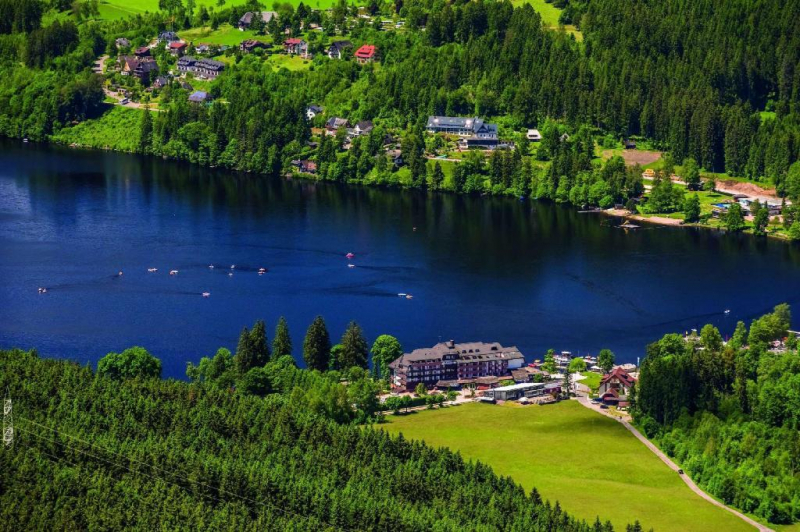
Photo: agoda.com 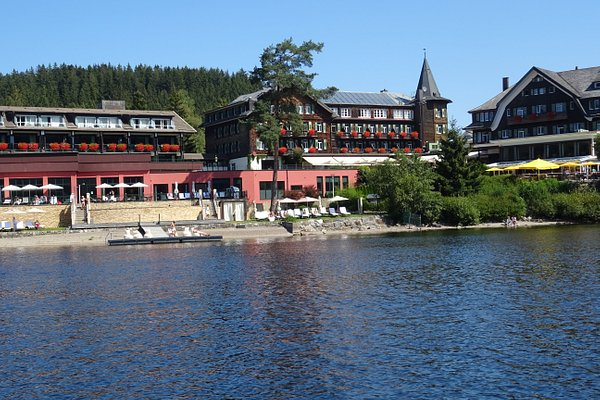
Photo: tripadvisor.com.vn -
The Chiemsee is a natural lake in Bavaria, Germany, halfway between Salzburg, Austria, and Rosenheim, Germany. It is frequently referred to as the "Bayern Sea." This lake receives water from the Tiroler Achen, Prien, and River Alz rivers as well as the River Alz itself. Chiemsee, also known as the "Bavarian Sea," is the largest lake in Bavaria. It has an area of 80 square kilometers, a diameter of roughly 64 kilometers, and a maximum depth of 73.4 meters.
The lake's northern and southern coastlines are level, and its eastern and western shores are bordered by rolling hills. The fishing is highly controlled despite the pristine waters and healthy trout and carp populations. The Herreninsel, which served as a bishopric's seat from 1215 until 1805, is home to a Benedictine monastery and a Bavarian royal castle that was inspired by Versailles. On the Fraueninsel, there used to be a Benedictine convent. Steamers run on the lake. The lake features a lot of interesting settlements to explore, two gorgeous islands that may be reached by boat, and a lovely landscape with mountains to the south. Chiemsee is one of the most beautiful lakes in Germany.
Location: Bavaria, Germany
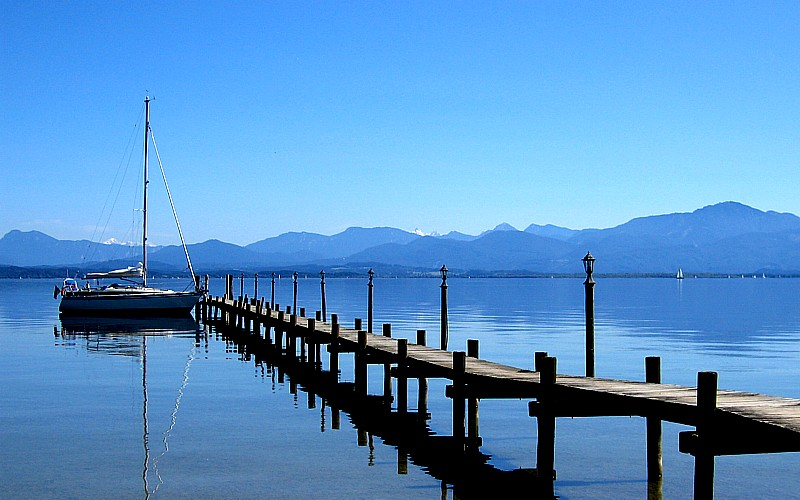
Photo: wikipedia 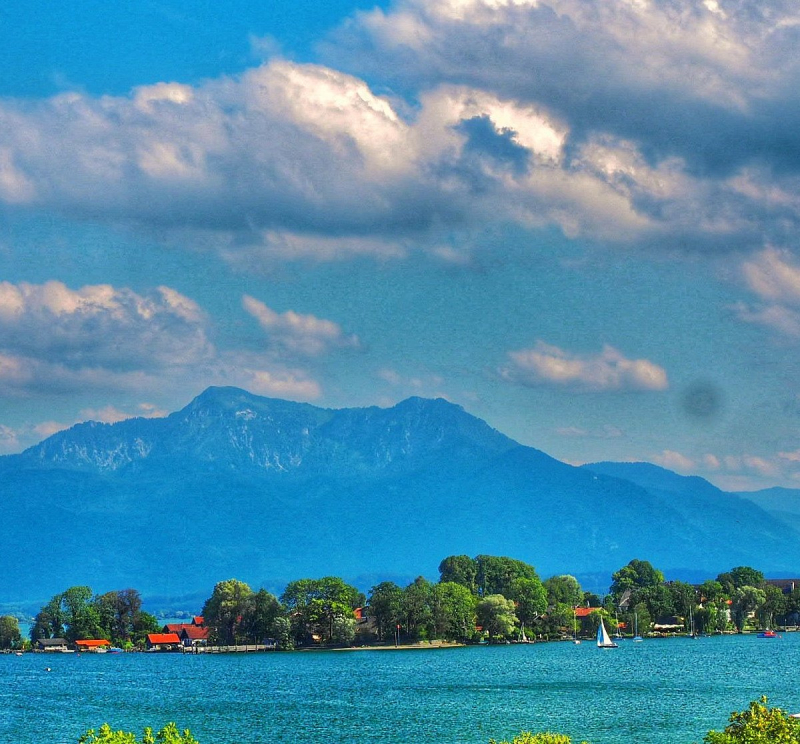
Photo: tripadvisor.com -
The Müritz is a lake in the northern German state of Mecklenburg-Vorpommern. With a surface area of 117 km2, it ranks as Germany's second-biggest lake and the largest lake wholly contained within German territory. Between the Pomeranian and Frankfurt Stages, during the Weichselian glacial, Lake Müritz was produced. The Mecklenburg Lake District was formerly one large lake that broke up into multiple smaller lakes connected to one another due to a drop in sea level.
Numerous uncommon birds live in the breathtakingly lovely Müritz National Park, which the lake touches on its shore. The Lake Müritz area offers a variety of sights to view and things to do, such as biking or hiking around the lake or swimming or boating in its tranquil waters. The intriguing towns of Mirow, Ankershagen, Röbel, Sietow, and Waren can also be explored by tourists.
Its deepest point is 31 meters. River Elde provides both its source and its exit. The Müritz National Park safeguards a portion of the Müritz as well as the nearby marshes and woodlands. The lake was the inspiration for the former Müritz neighborhood. The Mecklenburg Lake District's two largest towns and key tourist destinations are Waren (Müritz) and Röbel.
Location: Mecklenburgische Seenplatte, Mecklenburg-Vorpommern
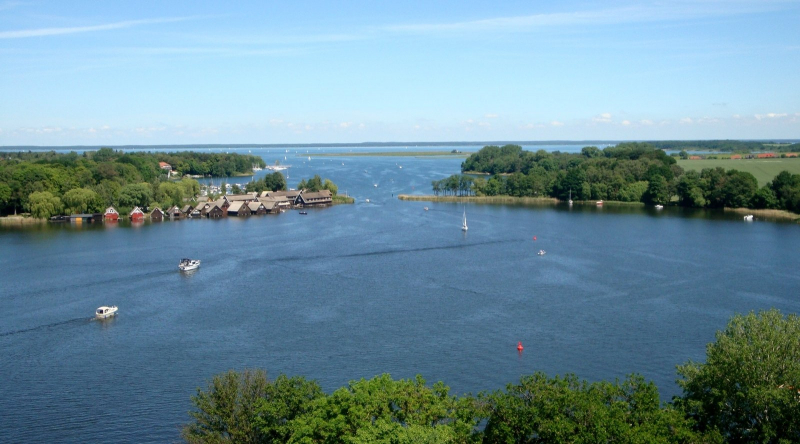
Photo: freeimages.com 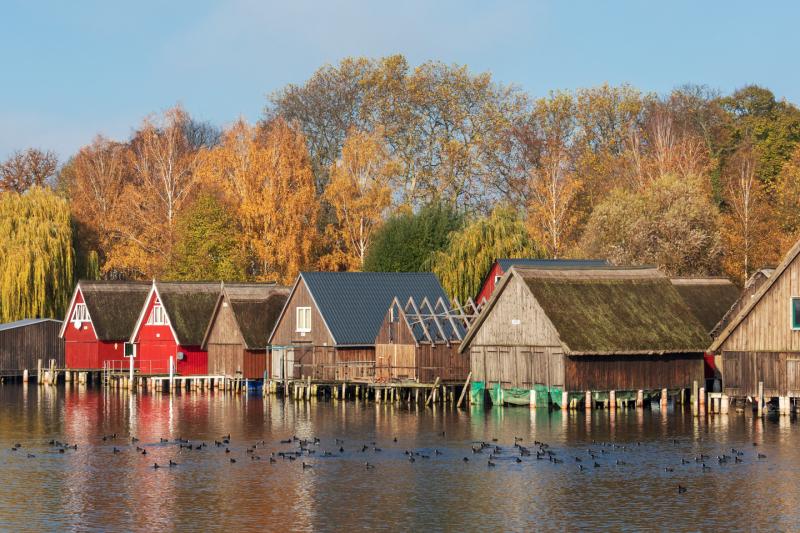
Photo: europcar.com -
A lake named Eibsee is located in Bavaria, Germany, around 100 kilometers southwest of Munich and 9 kilometers southwest of Garmisch-Partenkirchen. Its surface area is 177.4 hectares, and it is 973.28 meters above sea level. It is located 3.5 km to the south and at the northern base of Germany's tallest peak, the Zugspitze (2,950 meters above sea level). The lake is privately owned and is located inside the Grainau municipality.
The lake is regarded as one of the most beautiful lakes in the Bavarian Alps because of its location beneath the Zugspitze and the clean, green water. It was created when, at the conclusion of the Würm glacial, the Isar Loisach glacier withdrew and left a depression that accumulated water. A 350 million cubic meter landslide that covered 13 square kilometers and swept across the lake's eastern and central regions occurred between 1700 and 1400 BCE.
A stunning lake with emerald-green water, Eibsee is located in the rough Zugspitze mountain range. The Bavarian Alps' undiscovered gem is this privately owned lake with its eight islands. Visitors are welcome to explore the lake on foot along its hiking trails or by boat. When the lake completely freezes over in the winter, it becomes a stunning winter wonderland and a skiers' paradise.
Location: Bavaria, Germany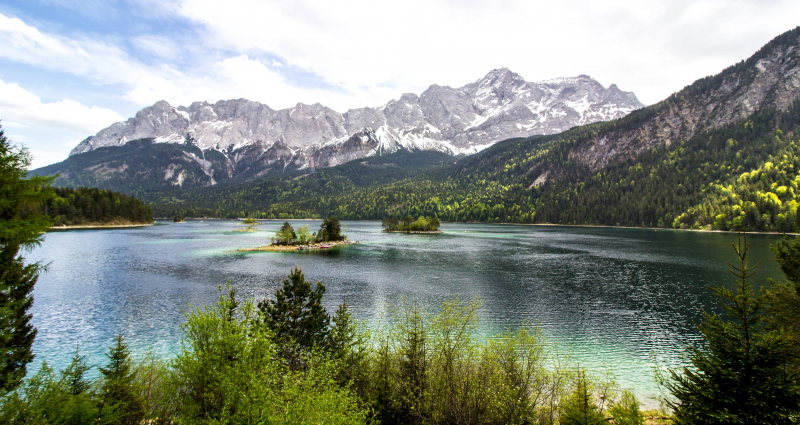
Photo: wikimedia commons 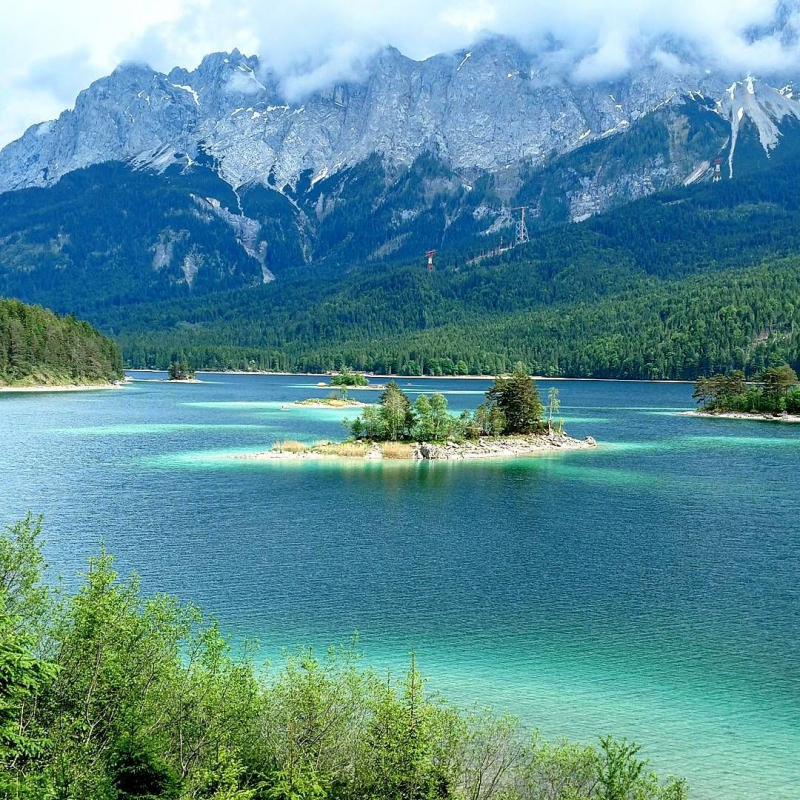
Photo: pinterest.com -
The next position on the list of the most beautiful lakes in Germany is Alpsee. About 4 kilometers southeast of Füssen in the German state of Bavaria's Ostallgäu region is a lake known as the Alpsee. The castles of Neuschwanstein and Hohenschwangau are nearby. The lake has a shoreline that is little about five kilometers long and can get as deep as 62 meters.
Due to its close vicinity to castles and the wild swans that live in the lake, Alpsee is a well-liked tourist destination. Additionally, there are numerous hiking routes nearby and boats for rent. A trail round the coastline and the "Fürstenstrasse" travels from Hohenschwangau down to Pinswang in the Lechtal after crossing the Schwarzenberg ridge.
This region is among Germany's most picturesque thanks to the Alpsee, the fairytale castles of Hohenschwangau and Neuschwanstein, and the lush, lovely Allgäu highlands. The lake is the ideal family vacation spot because it is tucked away between high cliffs and gloomy trees. In the summer, it provides boating, sailing, surfing, hiking, and swimming; in the winter, it provides skiing, snow hiking, and ice skating.
Location: Ostallgäu, Bavaria
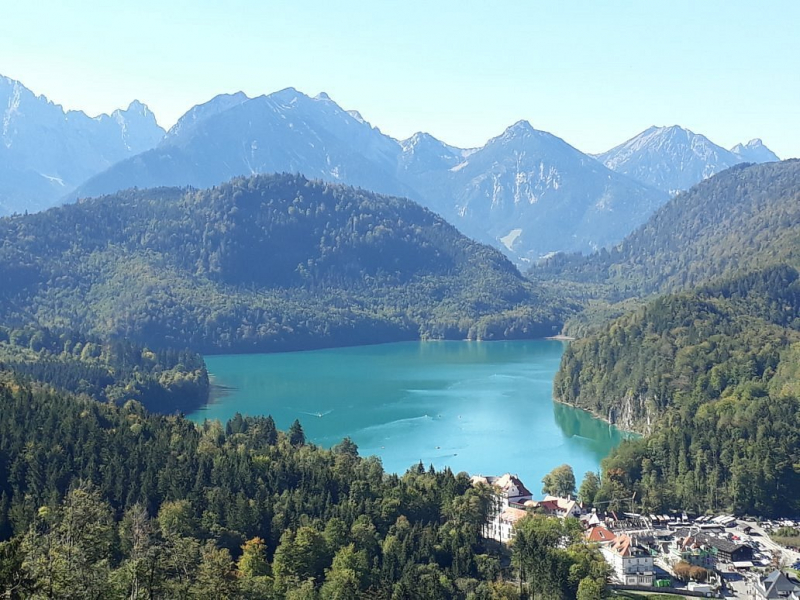
Photo: tripadvisor.com.vn 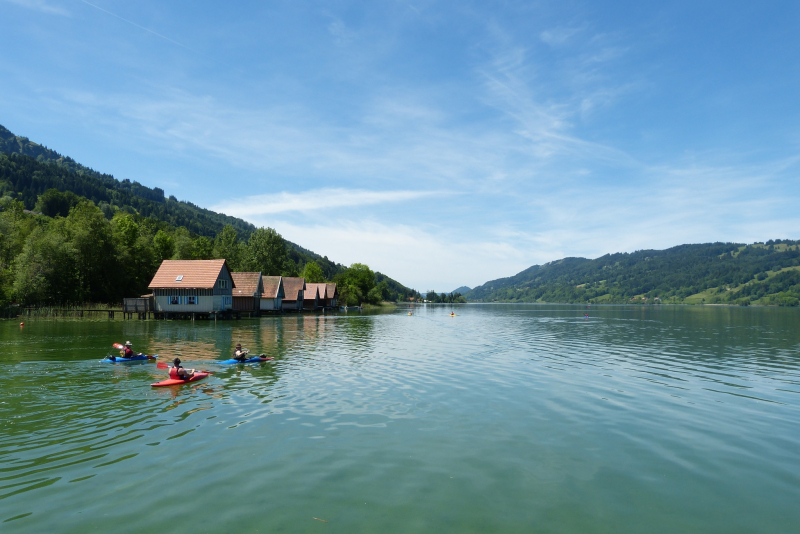
Photo: outdooractive.com -
In the Black Forest in Freiburg im Breisgau, Germany, the Schluchsee is a reservoir lake in the Breisgau-Hochschwarzwald neighborhood. It is located southeast of the Titisee. The Schluchsee is the highest reservoir in Germany and the largest lake in the Black Forest, rising 930 meters above sea level. The Hornberg Basin (Hornbergbecken), in contrast, is 1,048 meters above sea level but serves as the upper basin of a hydropower plant that uses pumped storage rather than a reservoir.
This glacial lake is a popular destination for tourists because of its breathtaking scenery, pure water, and the possibility to participate in a variety of water sports in addition to swimming. Other popular activities in this area include boating or hiking along the lake while taking in the hypnotic splendor of the Black Forest.
The Schluchsee's water is rather chilly even in the summer because of its elevation above sea level. Nevertheless, swimmers and sailors are particularly fond of the lake. Almost the entire shoreline of the Schluchsee is accessible, unlike the Titisee. The Schluchsee thus experiences high summer traffic.
Location: district of Breisgau-Hochschwarzwald, southeast of the Titisee in the Black Forest near Freiburg im Breisgau, Germany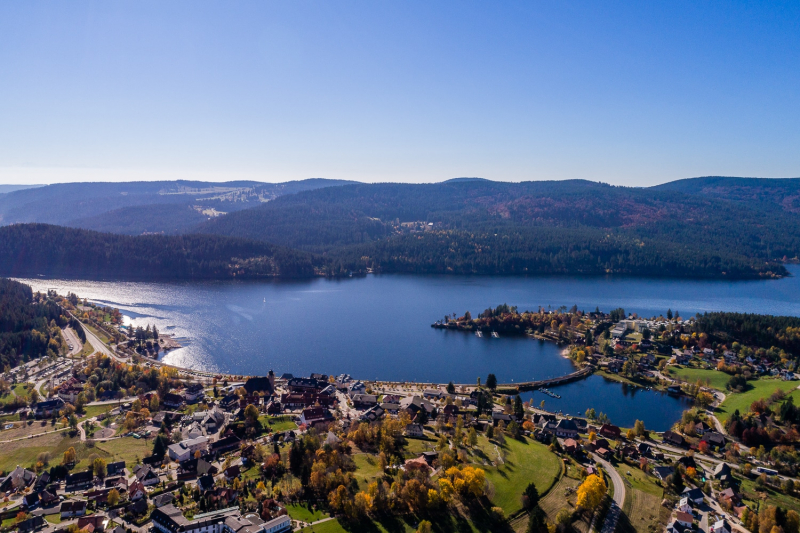
Photo: vjz.de 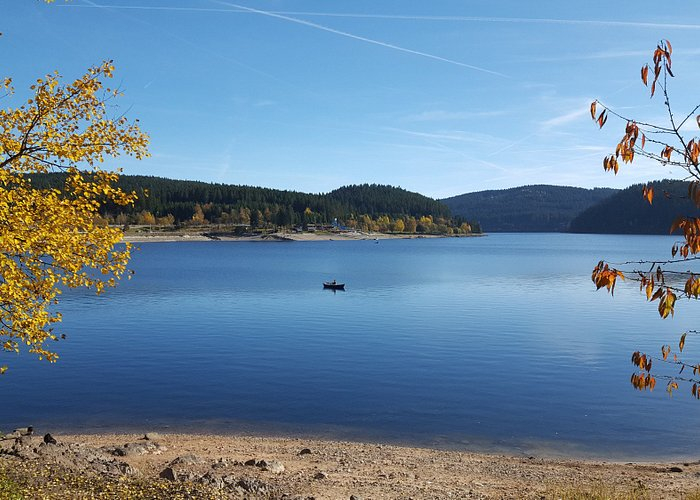
Photo: tripadvisor.com -
The Mummelsee, a 17-meter-deep lake, is located on the western slope of the Hornisgrinde in Germany's Northern Black Forest. Along the Black Forest High Road, tourists are known to frequent it in great numbers. According to mythology, the King of the Mummelsee and a Nix are said to reside in the lake. The Mummelsee is the largest of the seven cirque lakes in the Black Forest, measuring 800 meters in the circle. It is also the deepest and highest at 17 and 1036 meters, respectively.
The lake is covered in myths and traditions about water spirits and the King of the Mummelsee living there, which has greatly boosted its appeal and romance to tourists. This beautiful lake is surrounded by luxuriant greenery and provides hiking and bike paths, paragliding options, or simply a chance to get away from it all and enjoy some peace and quiet.
The Schwarzwaldhochstraße's path helped the lake become popular with tourists. Directly adjacent to the visitor's parking lot is a larger structure that houses the hotel, two restaurants, a grocery and gift shop, and a paddleboat rental.
Location: Northern Black Forest of Germany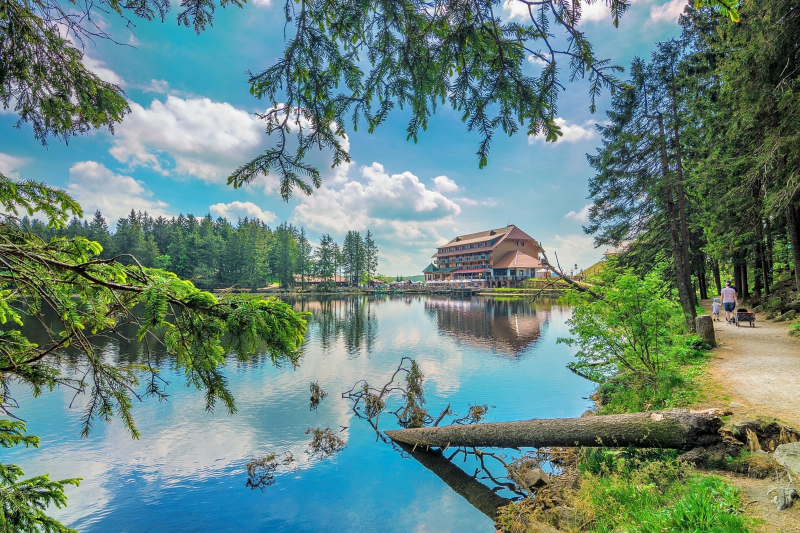
Photo: trip.com 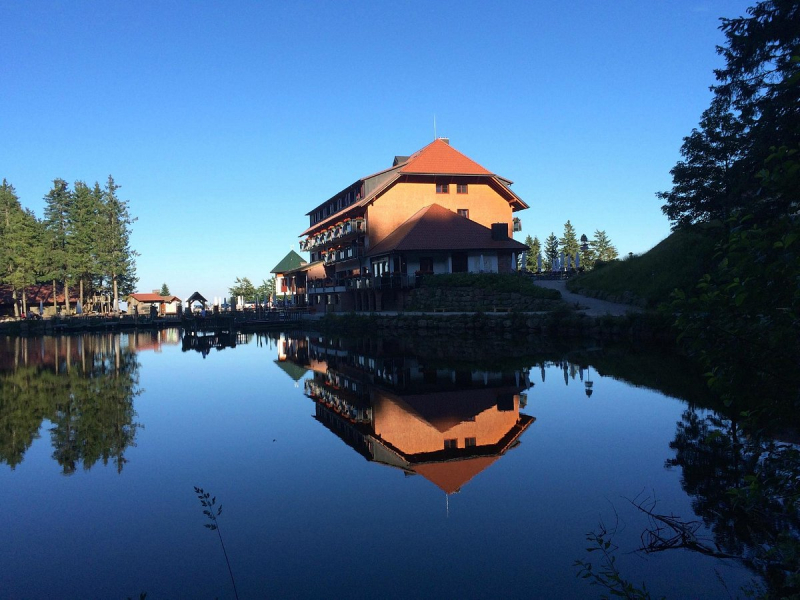
Photo: tripadvisor.com.vn -
The next position on the list of the most beautiful lakes in Germnay is the Tegernsee which is a Zungenbecken lake located in the southern German Bavarian Alps. A well-liked recreation area, 50 kilometers southeast of Munich, is centered around the lake. The lake's namealong Tegernsee as well as Bad Wiessee, Kreuth, Gmund, and Rottach-Egern are all resorts.
The lake measures about 6.5 kilometers in length, 1.4 kilometers in width, and 8.934 kilometers in area. The typical water level is 725.5 meters above sea level, with a maximum depth of 72.6 meters and an average depth of 36.3 meters. The lake empties into the River Mangfall, a River Inn tributary, and from there into the River Danube.
In the Bavarian Alps, Tegernsee is a brilliant blue lake that demands to be captured on camera. One of the most well-known lake resorts in the nation, it provides fantastic chances for hiking, biking, and adventure sports. It is also a fantastic location for health and wellbeing, offers a ton of entertaining activities for the kids, and is a wonderful choice for a family vacation.
Location: Bavarian Alps in southern Germany
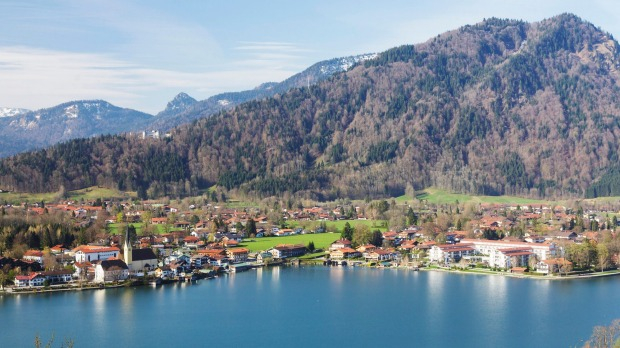
Photo: traveller.com.au 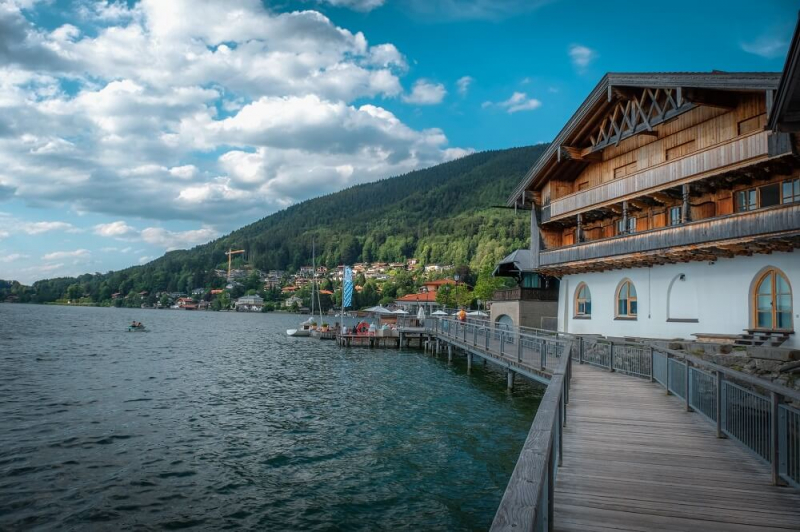
Photo: nina-travels.com -
Ammersee is a Zungenbecken lake located between the cities of Herrsching and Dießen am Ammersee in Upper Bavaria, Germany, southwest of Munich. It is Germany's sixth-largest lake, measuring roughly 47 square kilometers in surface area. The lake has a maximum depth of 81 meters and is located at an elevation of 533 meters (1,749 feet) (266 ft). Ammersee was created as a result of the ice age glaciers melting, much like other lakes in Bavaria. The River Ammer, which emerges from the lake as the Amper, nourishes Ammersee. It is a favorite spot for watersports since it is similar to neighboring Lake Starnberg in that it is deeper, larger in surface area, and shaped similarly.
Ammersee is a tranquil lake that is ideal for both a relaxing vacation and an active getaway. It boasts a stunning view of cliffs in the distance, picture-perfect boat houses, and azure waters. It is also a fantastic location for trekking and participating in water sports. While it is beautiful and brilliant in the summer, the area transforms into a warm array of red, yellow, and russet colors in the fall. The frigid lake acquires an otherworldly beauty in the winter when it is covered with snow and shrouded in mist.
Location: Upper Bavaria, Germany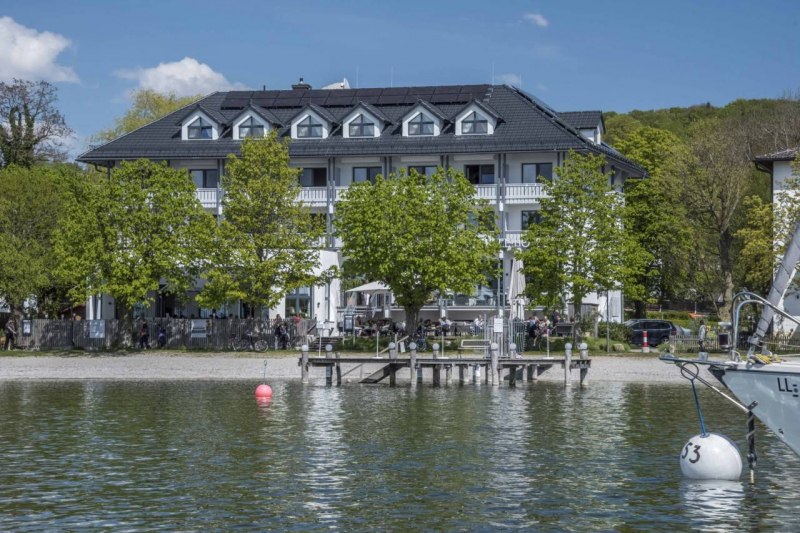
Photo: hrs.com Video: https://www.youtube.com/watch?v=uxmzk0cmanA -
One of the freshwater lakes in Germany is Lake Starnberg, also known as Starnberger See until 1962. It is also the fifth-largest lake in terms of surface area. It and its surroundings are divided among three separate Landkreise in Bavaria. Lake Starnberg, which lies 25 kilometers southwest of Munich in southern Bavaria, is a well-liked city recreation area and one of the wetlands of worldwide significance protected by the Ramsar Convention since 1976.
The deep-blue lake, ringed by towering mountains, and the boats bobbing in the distance look like they belong in a picture book. Take a cruise to the lake to really appreciate Lake Starnberg's splendor. Along the journey, the boats make stops in picturesque towns including Berg, Possenhofen, Tutzing, Bernried, and Seeshaupt. The establishment of a circular sewerage system in the 1960s, which gathers wastewater from nearby settlements and carries it to a treatment facility below the lake's mouth at Starnberg, is responsible for the lake's high water quality.
There is a path that is about 49 kilometers long that may be used by bikers and hikers to circle the lake. Since the lake shore is primarily on private property, not all of it may be accessed. Since 1851, passenger ferries and excursion ships have run on the lake. The Bayerische Seenschifffahrt firm currently runs them, utilizing contemporary ships with diesel engines.
Location: South Bavaria, Germany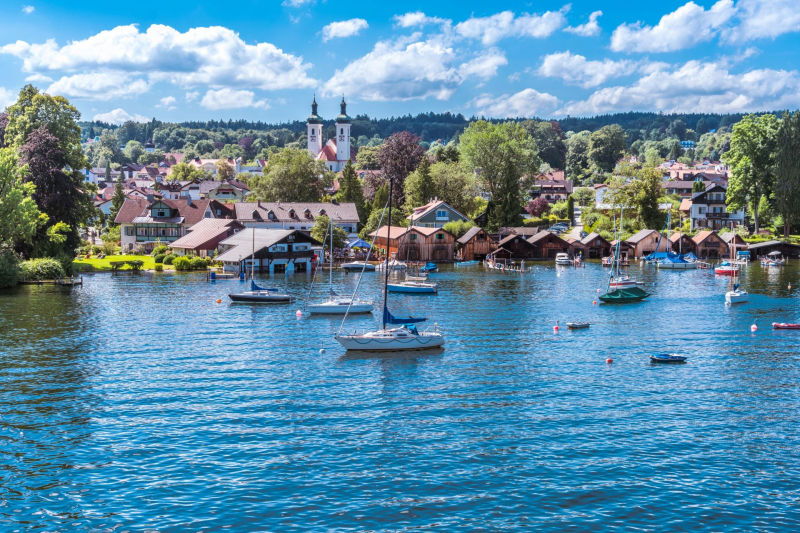
Photo: t24hs.com Video: https://www.youtube.com/watch?v=RGV9wVAiv0M















